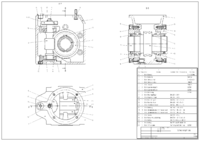
Photo from wikipedia
Full-wave electromagnetic (EM) simulation tools have become ubiquitous in antenna design, especially final tuning of geometry parameters. From the reliability standpoint, the recommended realization of EM-driven design is through rigorous… Click to show full abstract
Full-wave electromagnetic (EM) simulation tools have become ubiquitous in antenna design, especially final tuning of geometry parameters. From the reliability standpoint, the recommended realization of EM-driven design is through rigorous numerical optimization. It is a challenging endeavor with the major issues related to the high computational cost of the process, but also the necessity of handling several objectives and constraints over often highly-dimensional parameter spaces. From the numerical perspective, making decisions about the formulation of the optimization problem, the approach to handling the design constraints, but also parameterization of the antenna geometry, are all non-trivial. At the same time, these issues are interleaved, and may play an important role in the performance and reliability of the simulation-based design closure process. This paper demonstrates that the approach to arranging the structure parameterization (e.g., the use of absolute or relative parameters) may have a major effect of the optimization outcome. Our investigations are carried out using three broadband monopole antennas optimized under different scenarios and using different parameterizations. In particular, the results indicate that relative parameterization is preferred for optimization of input characteristics, whereas absolute parameterization is more suitable for size reduction.
Journal Title: Scientific Reports
Year Published: 2021
Link to full text (if available)
Share on Social Media: Sign Up to like & get
recommendations!